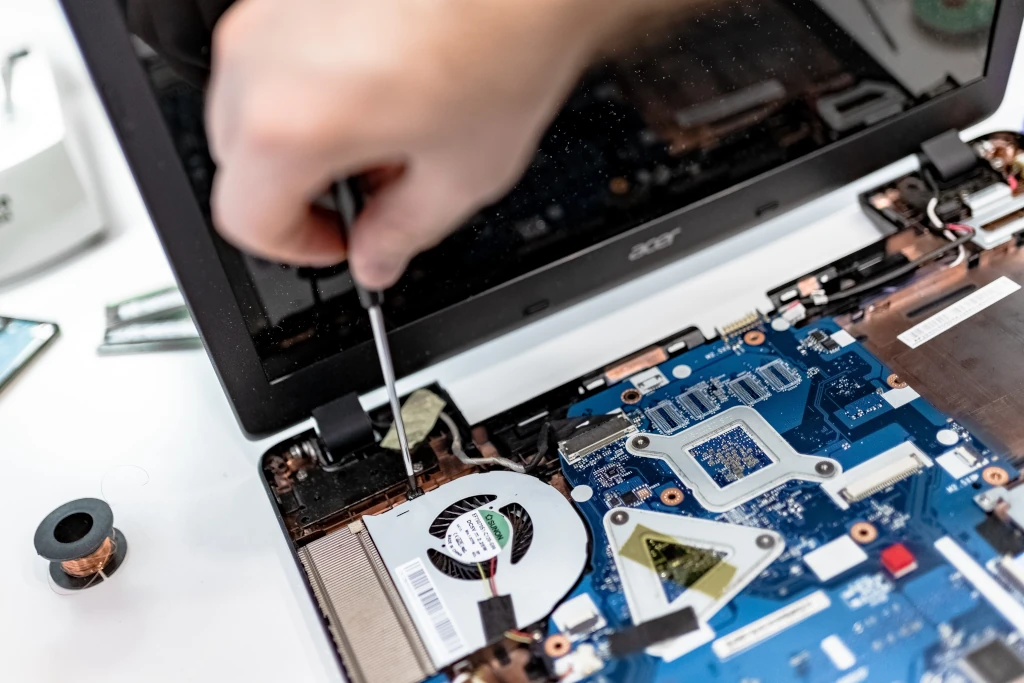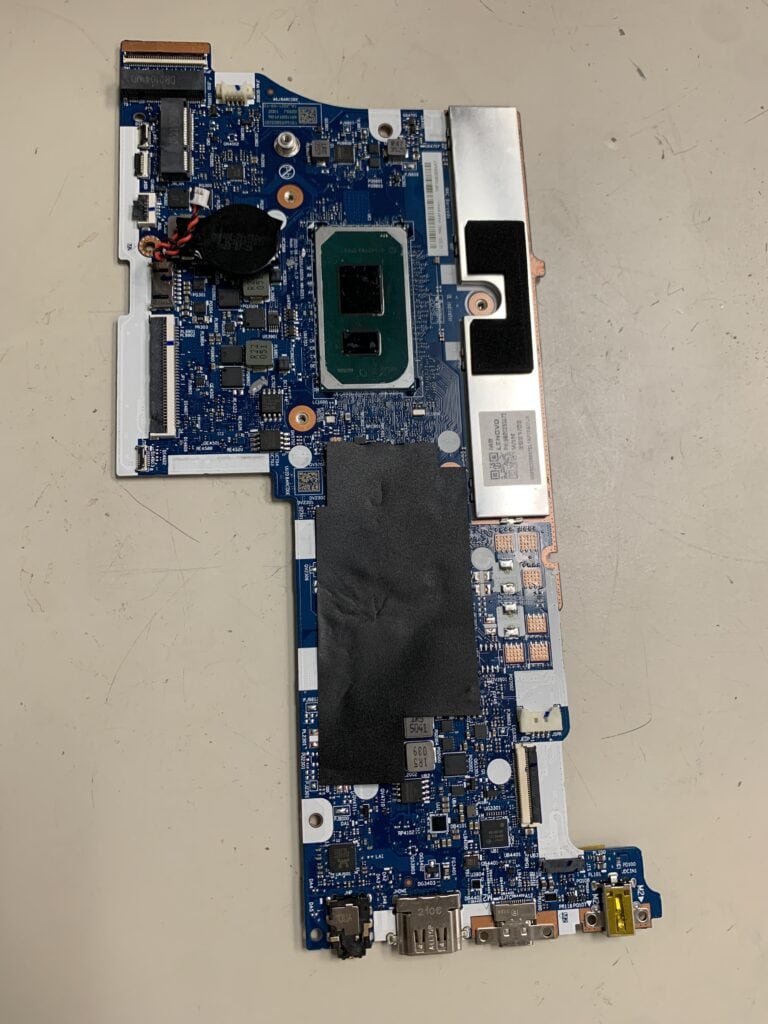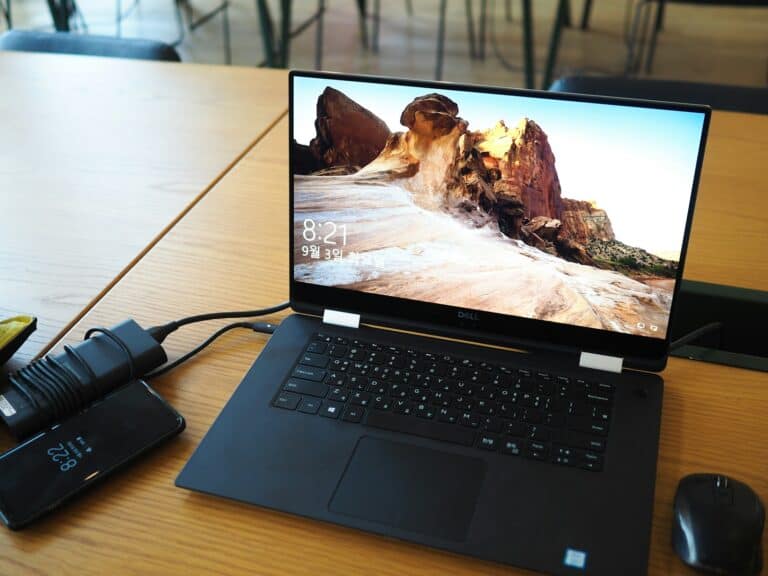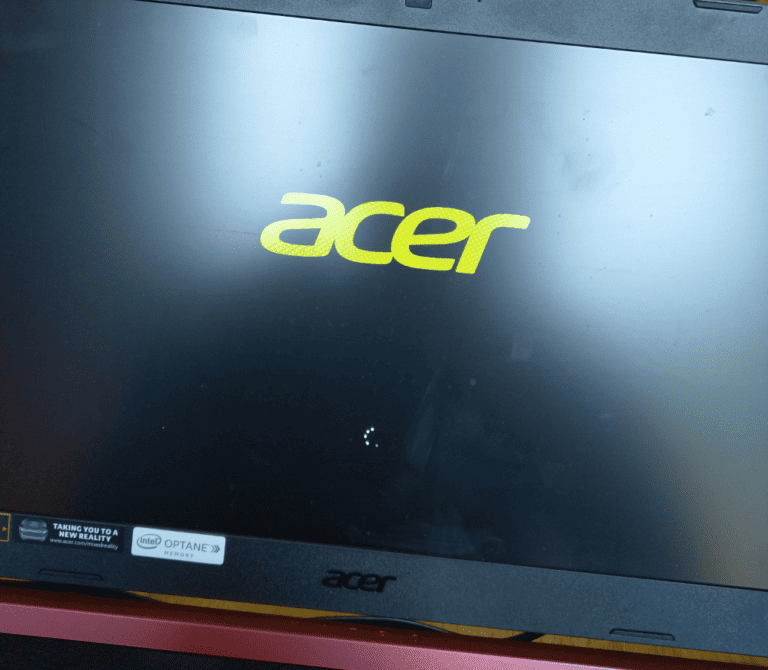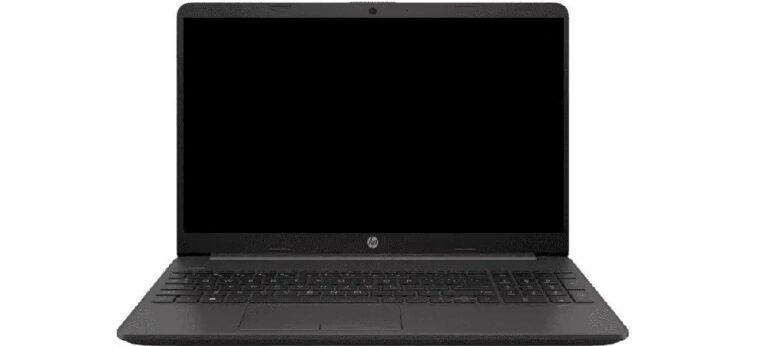Here’s a list of popular guides, tips, and tricks to fix various issues on your laptop. A laptop consists of hardware and software and is not just a portable computer. To repair a laptop, you will need various screwdrivers, such as a Phillips or hex screwdriver, a digital multi-meter, and other specialized tools to remove the covering (if it’s a physical issue). You’ll also need proper replacement parts if there’s something wrong with the hardware.
The good news is on the software side, it’s almost identical to a desktop computer so much of the troubleshooting on that front would be the same.
Whether you’re a student, professional, or tech enthusiast, understanding basic laptop repair and maintenance can save you money, extend your device’s lifespan, and prevent performance issues.
This guide covers essential maintenance techniques, repair tips, and preventive care that apply to most Windows and macOS laptops.
🧰 1. Essential Tools for Laptop Repair
Before you start any repair or maintenance work, gather the right tools. Using proper equipment prevents damage and ensures precision.
| Tool | Purpose |
|---|---|
| Phillips & Torx screwdrivers | Opening laptop casings |
| Plastic pry tools / spudgers | Safely removing panels and connectors |
| Anti-static wrist strap | Prevents electrostatic discharge (ESD) damage |
| Tweezers | Handling small screws and connectors |
| Compressed air | Cleaning dust from fans and vents |
| Thermal paste | Reapplying to CPU/GPU during deep cleaning |
| Multimeter | Checking power supply and battery health |
(Source: iFixit Laptop Maintenance Guide)
⚙️ 2. Routine Laptop Maintenance Techniques
Perform these maintenance tasks regularly to keep your laptop running smoothly.
🧼 A. Clean the Exterior and Keyboard
- Use a microfiber cloth slightly dampened with water or isopropyl alcohol.
- Avoid spraying liquids directly onto the laptop.
- Use compressed air to blow out dust from the keyboard and ports.
Tip: Clean your laptop every 1–2 weeks to prevent dust buildup.
🌡️ B. Keep the Cooling System Clean
Overheating is one of the most common causes of laptop failure.
- Power off and unplug the laptop.
- Remove the bottom panel (if accessible).
- Use compressed air to clean the fans, vents, and heat sinks.
- Reapply thermal paste every 1–2 years for optimal heat transfer.
Avoid: Blocking air vents or using your laptop on soft surfaces like beds or couches.
(Source: HP Tech Takes – PC Maintenance Guide)
🔋 C. Maintain Battery Health
- Avoid keeping your laptop plugged in 24/7.
- Keep battery levels between 20%–80% for longevity.
- Use Battery Health Management (macOS) or Battery Saver Mode (Windows).
- Replace swollen or degraded batteries immediately.
💽 D. Optimize Software Performance
- Uninstall unused programs.
- Run regular malware scans.
- Keep your OS and drivers updated.
- Use disk cleanup tools to remove temporary files.
- Defragment HDDs (not SSDs).
Pro Tip: Restart your laptop at least once a week to clear memory and refresh background processes.
🧩 3. Common Laptop Repairs and How to Handle Them
🔌 A. Laptop Won’t Power On
- Check power adapter and cable for damage.
- Test with another compatible charger.
- Remove the battery (if removable) and hold the power button for 15 seconds to discharge static.
- If still unresponsive, check the DC jack or motherboard fuse using a multimeter.
💻 B. Screen or Display Issues
- Test with an external monitor to rule out GPU problems.
- If the external display works, the issue may be the LCD cable, screen, or inverter.
- Replace the screen only if you’re comfortable disassembling the lid assembly.
🔈 C. No Sound or Audio Problems
- Check software settings and ensure drivers are updated.
- If hardware-related, inspect the audio jack and speakers for loose connections.
💾 D. Slow Performance
- Upgrade to an SSD if you still have an HDD.
- Increase RAM if your laptop supports it.
- Run Task Manager (Windows) or Activity Monitor (macOS) to identify resource-heavy apps.
🔥 E. Overheating or Fan Noise
- Clean fans and vents.
- Replace worn-out thermal paste.
- Use a cooling pad for better airflow.
- Check for background processes causing high CPU usage.
🧠 F. Broken Keyboard or Touchpad
- For stuck keys, remove and clean gently with isopropyl alcohol.
- If entire sections don’t respond, consider replacing the keyboard assembly (often integrated with the top case).
🖥️ 4. Preventive Maintenance Best Practices
| Habit | Why It Matters |
|---|---|
| Keep liquids away | Prevents short circuits and corrosion |
| Use a surge protector | Protects against voltage spikes |
| Avoid extreme temperatures | Prolongs battery and component life |
| Backup data regularly | Protects against data loss |
| Handle ports gently | Prevents physical damage to connectors |
| Keep software updated | Ensures security and stability |
(Source: Geeks2U Guide to Laptop Repairs and Maintenance)
🧾 5. When to Seek Professional Help
If you encounter any of the following, contact a certified technician or your laptop’s manufacturer support:
- Liquid damage or burnt smell
- Motherboard or GPU failure
- BIOS corruption
- Soldered component replacement (RAM, SSD, ports)
- Repeated system crashes even after software fixes
⚙️ 6. Useful Software Tools for Maintenance
| Tool | Function |
|---|---|
| CCleaner / CleanMyMac | System cleanup and optimization |
| HWMonitor / Macs Fan Control | Temperature and fan speed monitoring |
| CrystalDiskInfo | Check SSD/HDD health |
| Malwarebytes | Malware and spyware removal |
| Driver Booster / HP Support Assistant | Automatic driver updates |
🧾 Summary
| Category | Key Takeaway |
|---|---|
| Hardware Care | Clean fans, vents, and internal components regularly |
| Battery Maintenance | Keep charge between 20–80% |
| Performance Optimization | Use SSDs and update software |
| Preventive Actions | Avoid spills, heat, and dust |
| Professional Repairs | Seek help for complex or soldered parts |
📚 References
- HP Tech Takes – PC Maintenance and Repair Tips
- iFixit – Laptop Maintenance Guide
- Geeks2U – Guide to Laptop Repairs and Maintenance
- Blox Gadgets – Essential Guide to Laptop Repair and Maintenance
Keep Your Laptop Running Smoothly
Clean Your Laptop Regularly
Dust and debris can build up inside your laptop, causing overheating and performance issues. Regularly cleaning your keyboard, vents, and fan with compressed air can prevent this. Gently wipe the screen with a microfiber cloth and use a damp cloth for the exterior.
Update Your Software
Keeping your operating system and applications up-to-date is crucial. Software updates often include security patches, bug fixes, and new features that improve performance and stability.
Manage Storage Space
Running out of storage space can slow down your laptop. Delete unnecessary files, uninstall unused programs, and consider using cloud storage for large files.
Optimize Power Settings
Adjusting your power settings can help extend your laptop’s battery life. Lower screen brightness, disable unnecessary background processes, and turn off Wi-Fi and Bluetooth when not in use.
Check for Malware
Regularly scan your laptop for malware with a reliable antivirus program. This can help protect your data and prevent malicious software from slowing down your system.
Protect Your Laptop
Use a case or sleeve to protect your laptop from scratches and bumps. Avoid eating or drinking near your laptop, and be careful not to spill anything on it.
Backup Your Data
Regularly back up your important files to an external hard drive or cloud storage service. This ensures that you won’t lose your data if your laptop crashes or gets stolen.
Table: Laptop Maintenance Schedule
| Task | Frequency |
|---|---|
| Clean keyboard and vents | Monthly |
| Clean screen | Weekly |
| Update software | Weekly |
| Check for malware | Weekly |
| Backup data | Weekly or monthly |
Understanding Your Laptop
Components:
- CPU (Processor): The brain of the laptop, handling instructions and tasks.
- RAM (Memory): Where the laptop stores active data for quick access.
- Storage (HDD/SSD): The drawers where files and programs are kept long-term.
- Battery: The power source that allows for portability.
- Display: The window to all the digital content.
- Keyboard/Touchpad: Tools for interaction and commands.

Each of these components works together, creating an orchestra of functionality. However, laptops can face issues. Overheating is a notable problem, often due to dust in cooling vents or faulty fans. One should ensure fans are clean and replacing them if they’re not working properly.
Knowing the operating system is crucial, as it’s the interface between the user and the laptop’s technology. Whether it’s Windows, macOS, or Linux, the operating system has built-in tools for diagnostics and repair.
Manufacturers often provide repair manuals or guidelines specific to their models. Always consult these resources before attempting any DIY fix. Safety must be a priority – laptops are electrical devices and can be hazardous if handled carelessly.
By understanding the basic anatomy of one’s laptop and combining this knowledge with the intricacies of its design, users can approach repairs with confidence. It’s the appreciation of both software and hardware that enables an individual to troubleshoot effectively.
Laptop Repair Tips and Tricks: Table
| Category | Tip | Description |
|---|---|---|
| Troubleshooting | Restart your laptop: | This simple step can often resolve software glitches and minor issues. |
| Update software: | Ensure your operating system, drivers, and applications are up-to-date to fix bugs and improve performance. | |
| Run system scans: | Use built-in antivirus and anti-malware tools to detect and remove potential threats. | |
| Check connections: | Make sure all power cables and external devices are securely connected. | |
| Hardware Maintenance | Clean dust and debris: | Dust buildup can restrict airflow and cause overheating. Use compressed air to clean vents and fans. |
| Replace thermal paste: | Over time, thermal paste between the CPU and heatsink can dry out, reducing cooling efficiency. Consider replacing it if your laptop overheats frequently. | |
| Upgrade RAM: | Adding more RAM can improve performance for multitasking and demanding applications. Check compatibility with your laptop model. | |
| Software Solutions | Reinstall software: | Corrupted software can cause various issues. Reinstalling the program might resolve the problem. |
| Backup and reset: | If troubleshooting fails, consider backing up your data and resetting your laptop to factory settings. | |
| Professional Help | Seek professional assistance: | For complex hardware repairs or data recovery, consult a qualified technician. |
| Warranty coverage: | Check if your laptop is still under warranty and utilize authorized repair services if applicable. |
Additional Tips:
- Invest in a cooling pad: This can help improve airflow and prevent overheating, especially for laptops used on soft surfaces.
- Practice safe computing: Download from trusted sources, avoid suspicious links, and use strong passwords to minimize the risk of malware infections.
- Regularly back up your data: This ensures you don’t lose important files in case of hardware failure or accidental deletion.
Common Laptop Issues and Diagnostics
Navigating through laptop issues requires a keen eye for symptoms and a systematic approach to troubleshooting. This section will guide you through the common malfunctions and diagnostic steps to get your laptop running smoothly again.
Troubleshooting Slow Performance
Slow performance can turn a swift laptop into a sluggish device. Check for programs that hog your CPU or RAM and consider increasing your memory or upgrading to a solid-state drive (SSD). Running a malware scan is critical as malicious software can often reduce speed.
- Symptoms: Slow startup, programs load slowly, laggy user experience
- Diagnosis: Monitor resource usage, perform malware scans, check for system updates
Battery and Power Problems
Weak battery life can tether you to a power outlet. If your laptop dies quickly, try calibrating the battery. When it no longer holds a charge, it may be time for a battery replacement. Ensure the charger and power port are also functioning correctly.
- Symptoms: Laptop won’t hold charge, shuts down unexpectedly
- Diagnosis: Test with a different charger, check power settings, calibrate or replace battery
Overheating Challenges
A hot laptop can crash or shut down, as overheating is a common issue. Ensure the cooling fan is working and that there’s proper ventilation. Regularly cleaning out dust can prevent blocked air vents and overheating.
- Symptoms: Device feels hot, crashes under high workload
- Diagnosis: Check fan operation, clean vents, consider using a cooling pad
Screen and Display Troubles
Displays can suffer from dead pixels or become unresponsive, especially in touchscreens. Check for driver issues or physical damage. In some cases, professional repair or screen replacement may be necessary.
- Symptoms: Stuttering images, dead pixels, cracks
- Diagnosis: Update display drivers, adjust resolution settings, inspect for physical damage
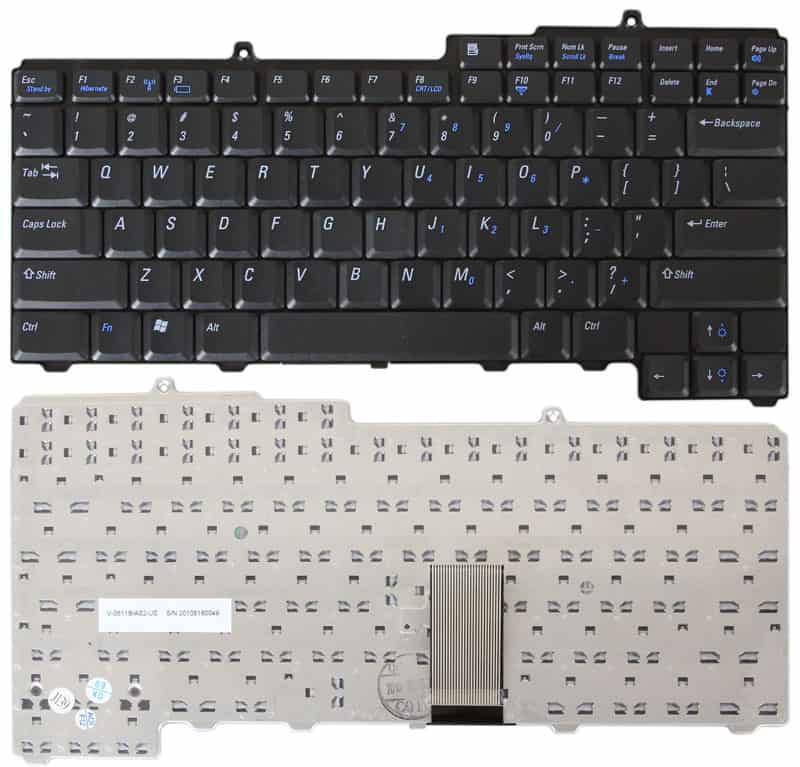
Keyboard and Input Malfunctions
If a keyboard becomes unresponsive or erratic, it might be a sign of dirt accumulation or a disconnection. Try cleaning beneath the keys and ensure that the keyboard’s drivers are up to date.
- Symptoms: Keys don’t respond, input is incorrect
- Diagnosis: Clean the keyboard, update or reinstall drivers
Connectivity and Software Glitches
Connectivity issues can stem from outdated drivers or incorrect settings. Confirm that your operating system and network drivers are current. For software glitches, reinstalling the problematic software may resolve the issue.
- Symptoms: Inability to connect to Wi-Fi, Bluetooth devices, or intermittent software freezes
- Diagnosis: Update drivers, check network settings, reinstall software
Physical Damage and Accidents
Drops and spills are the bane of laptops. Inspect for any visible damage and consider professional help if the laptop’s case is broken or if there’s liquid damage.
- Symptoms: Cracks, loose parts, unresponsive due to liquid spill
- Diagnosis: Look for physical signs of damage, consult with a repair expert
Motherboard and CPU Concerns
The motherboard and CPU are the heart of your laptop, and issues here can be severe. If the laptop doesn’t power on or experiences frequent crashes, this could indicate a motherboard or CPU problem.
- Symptoms: No power, blue screen errors, system halts
- Diagnosis: Conduct hardware diagnostics, possibly with professional tools
Fan Issues and Dust Accumulation
Fans circulate air to keep internal components cool. If your laptop’s fan is noisy or fails to spin, it might be clogged with dust or require replacement.
- Symptoms: Loud fan noise, fan does not spin, overheating
- Diagnosis: Clean the fan and vents, replace the fan if needed
This guide provides the starting points for addressing common issues with your laptop. Regular maintenance and being attentive to changes in performance can prevent many problems before they escalate.
Routine Laptop Maintenance
Keeping your laptop in optimum condition requires regular upkeep. Here are key practices to maintain performance and extend the lifespan of your device.
Cleaning Your Laptop
Over time, dust and debris can collect in your laptop which may lead to overheating and performance issues. To tackle this:
- Turn off and unplug your laptop before cleaning.
- Use compressed air to gently blow away dust from the keyboard and vents.
- Wipe the screen with a soft, slightly damp microfiber cloth to remove fingerprints and smudges.
- Clean the keyboard surface with isopropyl alcohol and a cotton swab to disinfect and remove oily residue.
Updating System and Software
Software updates are crucial for security and performance:
- Regularly check for and install operating system updates to patch security vulnerabilities and improve functionality.
- Update your applications to the latest versions to enhance performance and gain new features.
- Remember to backup your data before major updates to prevent data loss.
Regular Maintenance Checks
Perform the following checks to prevent common laptop issues:
- Once a month, review your system for unnecessary files and programs that may slow down your laptop.
- Check your antivirus software is up to date and run scans to protect against malware.
- Monitor your laptop’s battery health and consider a replacement if you notice significant capacity loss.
- Ensure vents and fans are clear to prevent overheating. If necessary, seek professional help for internal cleaning.
Repair and Replacement
When your laptop runs into issues, knowing whether to attempt a repair at home, seek professional help, or replace a part can be crucial in saving time and money.
Do-It-Yourself (DIY) Repairs
For the hands-on individuals, DIY repairs can be a cost-effective solution. Common issues like a battery not holding charge or a fan sounding like a jet engine might only require simple fixes. However, one should only tackle repairs if they feel comfortable and have the right tools. For example, expanding memory, or installing a new hard drive, usually involves just a screwdriver and careful hands.
Professional Repair Services
Services with professional expertise are essential when the problem lies deep within the motherboard or when advanced troubleshooting is beyond one’s skill level. Going to pros can ensure that complex issues are resolved without causing further damage. They often provide a warranty on their repairs, adding a layer of security to the investment.
Parts and Component Replacement
Sometimes, fixing a laptop means replacing parts. This could range from a cracked laptop screen repair to swapping out an old keyboard. Battery replacement is another common fix as batteries lose their ability to charge over time. It’s key to buy genuine parts for compatibility and performance reasons.
Optimizing Laptop Performance
Upgrades, such as adding more RAM, essentially give a boost to a laptop’s performance. After resolving hardware issues, addressing software could help too. Keeping the laptop’s operating system and all installed programs updated can avoid conflicts and maintain efficiency. Regular maintenance, like defragmenting your hard drive, can help as well.
Frequently Asked Questions
This section addresses some common inquiries about laptop repair, providing clear and concise information that can help you troubleshoot or decide on the best course of action.
What are the common steps for diagnosing laptop hardware issues?
When hardware problems surface, it’s often wise to start by checking for overheating. This issue can be identified by cleaning air vents or listening for a malfunctioning cooling fan. Running a diagnostic test, if your laptop’s manufacturer provides one, can also pinpoint hardware faults.
How can I perform a software repair on my laptop?
Software issues can be tackled by conducting virus scans using reliable antivirus software and performing system updates. If your laptop is sluggish or error messages pop up, consider a system restore or reset to its original settings. Remember to back up your data first.
What precautions should I take before attempting a DIY laptop repair?
Before diving into a repair, power off your laptop and disconnect it from any power source. Ground yourself to prevent static damage to the internal components. If you’re not confident or if the laptop is still under warranty, it’s best to seek professional help.
When should I consider professional repair services over fixing a laptop by myself?
Complex problems like motherboard issues or a broken LCD should typically be handled by a professional. Trying to fix these on your own without the right tools or expertise can result in more damage or void warranties.
How do I safeguard my personal data when sending my laptop for repairs?
Back up your files to an external drive or cloud storage before handing over your laptop. Consider removing sensitive data or performing a factory reset. Secure your backup and reset your passwords after the laptop is returned.
What factors should I evaluate to decide if my laptop is worth repairing?
Consider the age of your laptop, the cost of the repair versus replacement, and whether the hardware can support the latest software efficiently. Sometimes investing in a new laptop is more economical and practical in the long run.

